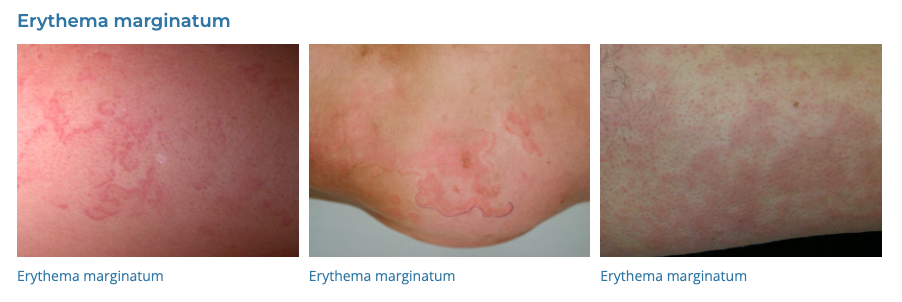Rheumatic fever is an inflammatory disease that can develop as a complication of inadequately treated strep throat or scarlet fever, both caused by group A streptococcus bacteria. It can affect the heart, joints, skin, and brain.
Causes
- Group A Streptococcus Infection: Usually follows 1-5 weeks after a strep throat infection. Not all strep infections lead to rheumatic fever, and susceptibility varies among individuals.
Diagnosis
- History:
- Recent Infection: Throat infection or scarlet fever 2-4 weeks prior.
- Symptoms: May include fever, joint pain and swelling, involuntary movements (Sydenham’s chorea), skin rash (erythema marginatum), and nodules under the skin.
- Physical Examination:
- Joints: Swelling, redness, and pain, typically in large joints like knees and elbows.
- Heart: Murmurs, indicating potential valvular damage.
- Skin: Look for erythema marginatum and subcutaneous nodules.
- Neurological: Assess for Sydenham’s chorea – involuntary, irregular movements of the face and extremities.
- Investigations:
- Throat Culture or Rapid Strep Test: To identify recent strep infection.
- Blood Tests:
- Elevated streptococcal antibodies (ASO and Anti-DNAse B)
- Increased inflammation markers (ESR, CRP).
- Echocardiogram: To evaluate heart function and structure.
- Electrocardiogram (ECG): If heart involvement is suspected.
- Jones Criteria:
- The diagnosis of rheumatic fever is based on the revised Jones Criteria, which include major and minor criteria.
- Major criteria include
- carditis
- arthritis,
- subcutaneous nodules,
- erythema marginatum rash
- Sydenham chorea
- Minor criteria include
- prolonged PR interval on an ECG
- arthralgia
- fever
- elevated CRP and ESR
- A diagnosis of rheumatic fever is typically made if the patient meets two major criteria or one major and two minor criteria, in addition to evidence of a recent streptococcal infection.
Differential Diagnosis
- Septic Arthritis: Joint infection causing similar joint symptoms.
- Juvenile Idiopathic Arthritis: Chronic arthritis in children.
- Viral Arthritis: Transient arthritis following viral infections.
- Infective Endocarditis: Especially if there is heart involvement.
- Systemic Lupus Erythematosus (SLE): SLE can cause arthritis, skin rashes, and other symptoms similar to those of rheumatic fever.
Management
- Antibiotics: For existing strep infection and prophylaxis to prevent recurrence.
- Benzathine benzylpenicillin IM 1.2 million units stat (10-20kg 0.6 million units) – every 21-28 days
- Anti-inflammatory Treatment: High dose aspirin is used
- Naproxen 500mg oral BD (10mg/kg for kids) until joint symptoms settled for 1-2 weeks
- Corticosteroids: In severe cases, especially with carditis.
- Bed Rest: During the acute phase, especially with carditis.
- Long-term Antibiotic Prophylaxis: To prevent recurrent attacks, which can worsen heart damage.
- Regular Monitoring: Especially cardiac follow-up due to the risk of chronic valvular heart diseases.
- Heart Surgery: In cases of severe chronic valvular disease.
- Long-Term Prophylaxis: After an episode of rheumatic fever, patients are usually prescribed long-term antibiotic prophylaxis to prevent recurrent streptococcal infections, which can trigger further episodes.
- Preventive Measures: Public health measures to prevent streptococcal infections, particularly strep throat, are crucial to reducing the incidence of rheumatic fever.
- Prognosis: Varies depending on the extent and severity of the complications, especially cardiac involvement. Early treatment can prevent or reduce the severity of these complications.
Duration of Penicillin Treatment
- Age and Duration Since Last Attack:
- In children and adolescents, prophylaxis is usually recommended until they reach adulthood, often until the age of 21 years or for a minimum of 5 years after the last attack, whichever is longer.
- For adults, the duration may vary based on the time elapsed since their last rheumatic fever episode and their ongoing risk of exposure to Group A Streptococcus.
- Presence of Cardiac Involvement:
- If rheumatic fever has caused damage to the heart valves (rheumatic heart disease), longer-term or even lifelong prophylaxis may be necessary.
- The decision for lifelong prophylaxis is often considered in patients with severe valve damage, those who have undergone valve surgery, or those with a history of recurrent rheumatic fever episodes.
In summary, rheumatic fever is a preventable sequela of strep throat, largely mitigated by timely and adequate treatment of streptococcal infections. It requires a high index of suspicion following a strep infection, especially in children, and management focuses on eradicating the infection, controlling inflammation, and preventing recurrence.

